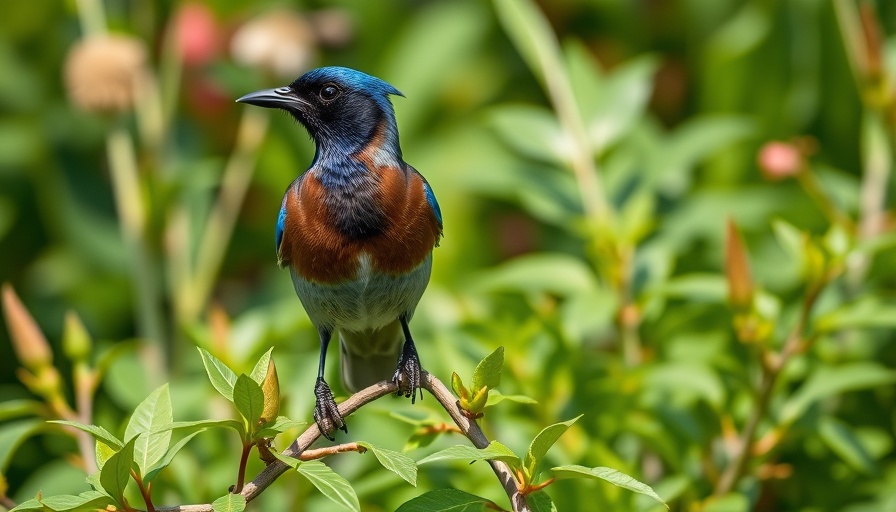
Create a Bird-Friendly Paradise in Your Backyard
As July rolls in with warm temperatures and bustling wildlife, prioritizing our yards can turn them into havens for birds. Whether you’re an experienced birder or a curious beginner, crafting an inviting environment for our feathered friends involves more than simply hanging feeders. The right plants and a thoughtful layout can significantly enhance your backyard's appeal.
Why Native Plants Are Essential for Birds
In the quest to attract birds, native plants play a crucial role. Consider them the essential ingredients in a recipe for success. Native plants support local ecosystems by providing food, shelter, and nesting materials that non-native species cannot. Their deep-root systems help prevent soil erosion, create natural habitats, and are often hardier during extreme weather.
Choosing the Best Native Plants for Your Region
Each geographic area has specific plants that thrive locally, attracting various bird species. In Eastern and Central North America, consider planting native wildflowers like bee balm and coneflowers. For those in Western regions, plants like California lilac are excellent choices. These naturally occurring beauties not only enhance your yard's aesthetics but also create a universal buffet for birds.
How to Design a Bird-Friendly Yard
Transforming your garden into a bird-friendly oasis doesn't have to resemble a jungle. Start with strategic layouts incorporating shrubs and flowering plants that offer perches and cover. Consider layering plants according to height—tall ones in the back and shorter ones in the front—so birds have various levels to explore. Moreover, a mix of flowering and fruiting plants ensures seasonal interest and sustenance.
Common Mistakes to Avoid When Birdscaping
Even seasoned bird enthusiasts can fall prey to garden blunders. Avoid over-mulching, which can suffocate roots, and refrain from focusing solely on aesthetic colors without considering ecological value. Additionally, don’t forget to provide water sources—a simple birdbath will suffice.
Maintenance for Long-lasting Impact
To ensure ongoing success in your backyard birding efforts, a regular maintenance schedule is essential. This includes weekly water changes in your birdbaths and seasonal pruning to promote healthy growth. Additionally, stay vigilant against invasive species that may disrupt the natural beauty you’ve cultivated.
Conclusion: Craft Your July Birding Strategy
By incorporating native plants and thoughtful design into your yard, you create a welcoming space for birds while enjoying the beauty and serenity they bring. Looking ahead to fall? Start planning your planting now, ensuring you maximize your yard's potential for the birds!
 Add Row
Add Row  Add
Add 




Write A Comment